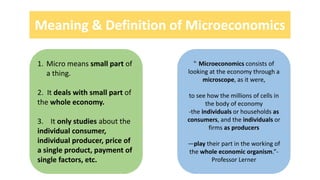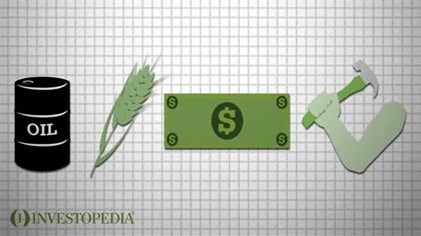Economics is the study of how societies allocate scarce resources, such as land, labor, and capital, to meet their needs and wants. Within the field of economics, there are two main branches: microeconomics and macroeconomics.
Microeconomics is the study of individual economic units, such as households and firms, and how they make decisions regarding the allocation of resources. It examines how these decisions affect the market and the behavior of prices. Microeconomics is concerned with issues such as supply and demand, price determination, and the distribution of income.
Macroeconomics, on the other hand, is the study of the economy as a whole. It looks at the overall performance of the economy, including measures such as GDP, unemployment, and inflation. Macroeconomics is concerned with issues such as economic growth, business cycles, and the role of monetary and fiscal policy in managing the economy.
Both microeconomics and macroeconomics are important for understanding how economies function. Microeconomics helps us understand how individual consumers and firms make decisions, while macroeconomics helps us understand the bigger picture of how the economy as a whole is performing.
Microeconomics and macroeconomics are closely related, as the decisions made by individual economic units can have an impact on the overall economy. For example, if a firm decides to increase production, it can lead to an increase in GDP, which is a measure of economic growth. Similarly, if households decide to increase their spending, it can lead to an increase in demand for goods and services, which can drive up prices and contribute to inflation.
In conclusion, microeconomics and macroeconomics are two branches of economics that study different aspects of the economy. Microeconomics focuses on the behavior of individual economic units, while macroeconomics looks at the economy as a whole. Both are important for understanding how economies function and make informed decisions about resource allocation.







